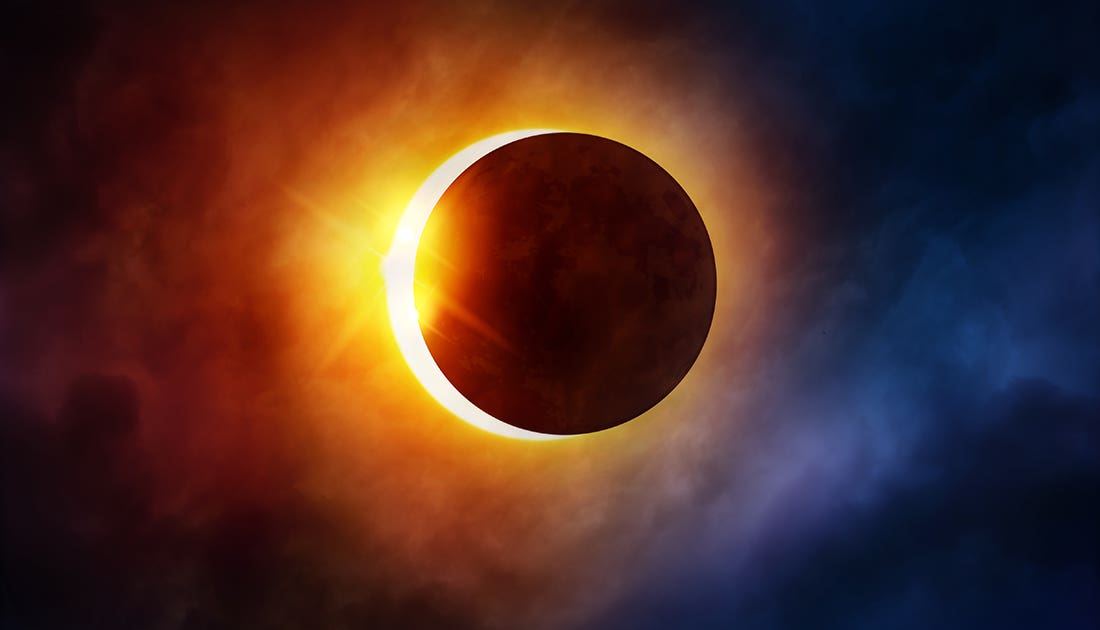A total solar eclipse is the moment when the moon passes directly between the sun and the Earth, covering the face of the sun. It is a time when day becomes night, and the wild answers the call of the moon.
On Monday, April 8th Sarah Kraning, artist and Re:wild ambassador, will paint the sounds of the wild during a total solar eclipse.
Sarah Kraning is an abstract artist with synesthesia. Her art is inspired by the colors, textures, and movement that she experiences when she hears sound. Captivating a global audience through her vibrant social media presence and unique art pieces, Sarah has performed internationally to bring music to living color. More recently, she has dedicated her talent to help Re:wild raise awareness of the plight of the Critically Endangered Swift Parrot.
What happens to wildlife during an eclipse?
An eclipse is a time of disruption and confusion. But it also leads to reemergence and growth. Our ecosystems, too, are undergoing a huge disruption with climate change. For growth and reemergence to happen, we need to protect and restore the wild.
Animals structure their time around the light-dark cycle of a regular day. Eclipses disrupt this rhythm, prompting some strange behavior…
1. THINGS GET A LITTLE BATTY.
Bats emerge from their roosts in the middle of the afternoon, and they aren't the only ones. Other nocturnal animals start to leave their daytime sleeping places too, while diurnal animals —animals usually active during the day— might look for a place to sleep. Crickets start to chirp.
2. SOME SPIDERS UNWIND.
When the solar eclipse reaches totality, orb-weaving spiders dismantle their webs — as they do at the end of each day — only to rebuild them as soon as the sun returns.
3. HIPPOS MIGHT BE A LITTLE CONFUSED.
During a solar eclipse in 2001, researchers observed a group of hippos heading towards the Zambezi River — possibly mistaking it for night time, when they graze on riverbanks. When the sunlight returned, the animals were reported to look “confused” and “apprehensive.”
4. BIRDS BEHAVE IN MYSTERIOUS WAYS.
During the 2017 eclipse, scientists noted a decrease in the activity of flying insects and flying birds, and behaviour that was very different from the way these animals typically move when it gets dark at night. This year's eclipse provides a further opportunity to study how animals perceive and use light — and how they respond to the absence of sunlight when it is blocked by the moon.
5. HUMANS LOOK TO THE SKIES.
Human beings change their behaviour too. Some of us travel to new parts of the world to be able to observe a solar eclipse at its totality. As the moon moves in front of the sun, effectively blocking sunlight, our eyes are drawn to the sky. But the ring of sunlight that remains is still too bright for us to look at safely, so we use tools like solar glasses to protect our retinas when we look directly at the sun.
A solar eclipse creates a false sense of night — it is something between darkness and light, when our twilight (or mesopic) vision changes the way we see and perceive colours. That is why some scientists recommend wearing shades of red and green on eclipse day.



